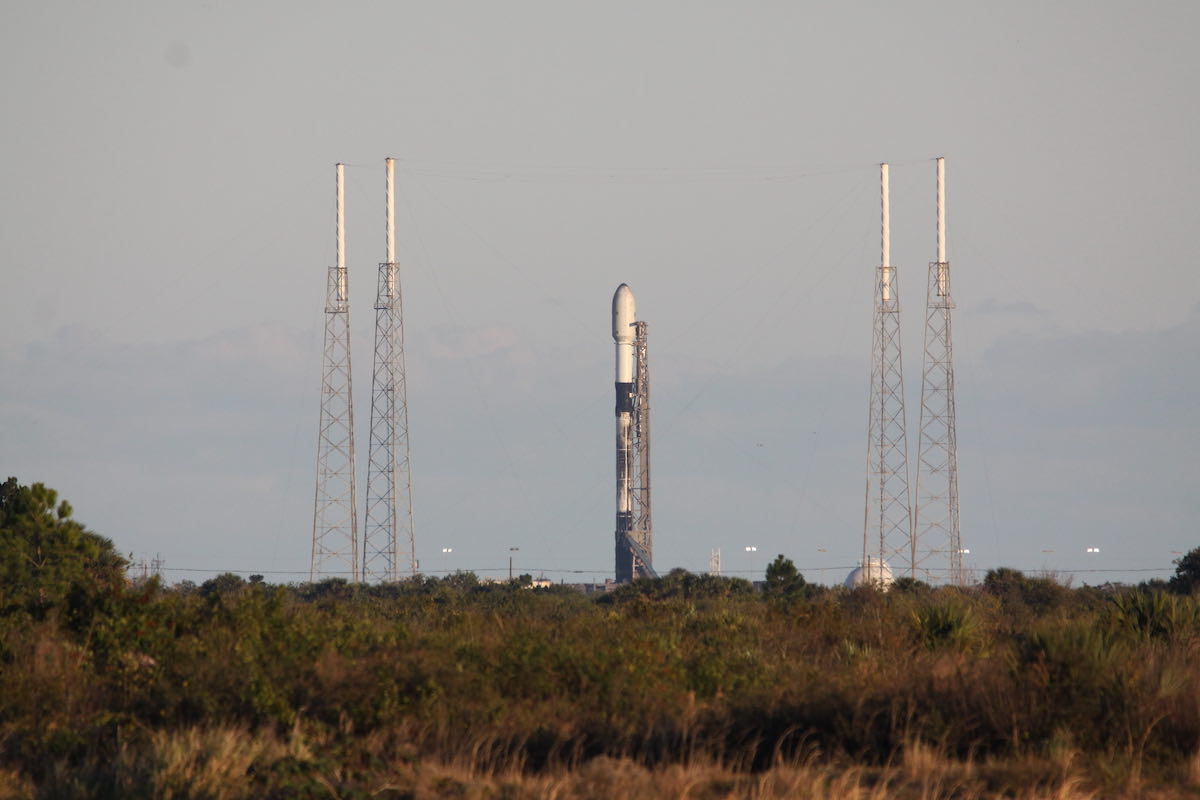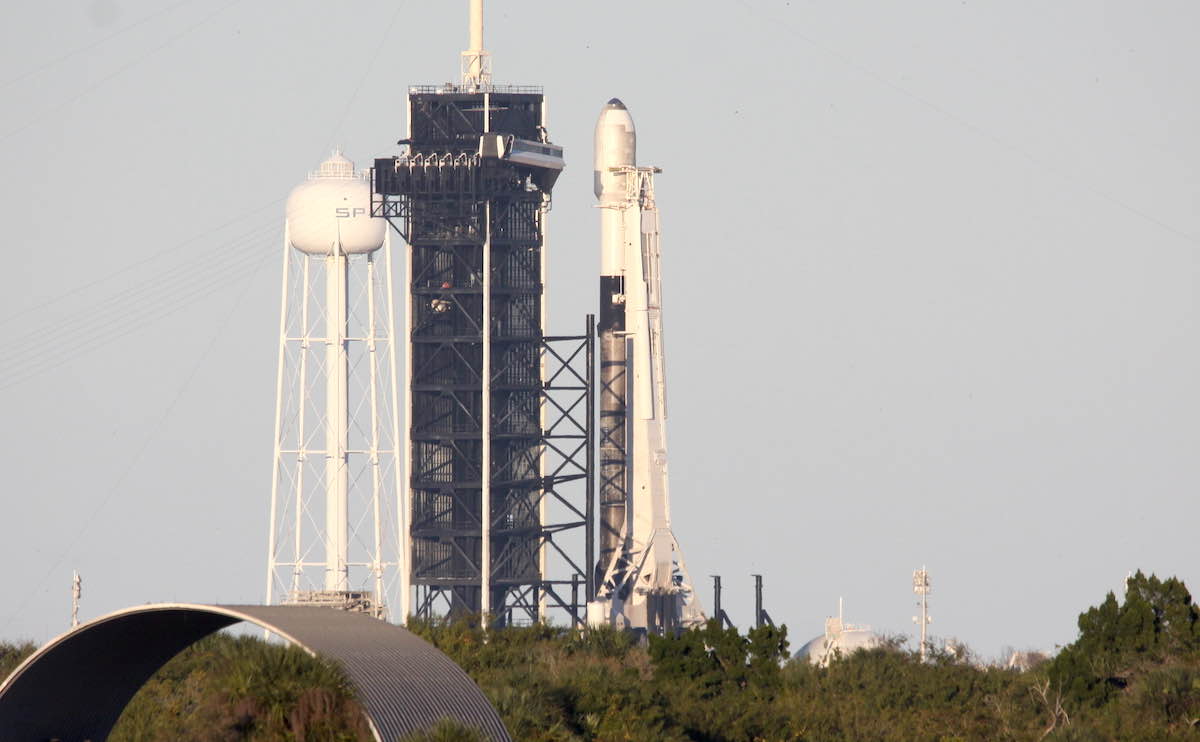
A cruise ship that ventured under the planned flight path of a Falcon 9 rocket near Cape Canaveral Sunday forced SpaceX to delay launch of an Italian Earth-imaging satellite for a fourth time, setting up the mission for another try just after sunset Monday.
SpaceX was set to fire a Falcon 9 rocket into orbit from pad 40 at Cape Canaveral Space Force Station at 6:11 p.m. EST (2311 GMT), but the Coast Guard could not clear a cruise liner out of the rocket’s downrange hazard area in time for the mission’s instantaneous launch opportunity.
The launch director called a hold in the countdown at T-minus 33 seconds, and announced SpaceX’s launch team will try again Monday at the same time.
The last-minute hold marked the fourth delay for SpaceX’s mission to launch Italy’s newest COSMO-SkyMed radar remote sensing satellite. Bad weather prevented the Falcon 9 from taking off Thursday, Friday, and Saturday.
Weather conditions were chilly but ideal for launch Sunday. Similar conditions are forecast Monday evening, when there’s a 90% chance that winds and clouds will be acceptable for liftoff of the Falcon 9. The rocket’s reusable first stage will return to landing at Cape Canaveral about eight minutes after launch.
SpaceX did not identify which cruise ship caused the delay Sunday. Cruise liners from Royal Caribbean and MSC Cruises departed Port Canaveral Sunday evening. The port is located just south of Cape Canaveral Space Force Station.
The COSMO-SkyMed radar satellite will join a fleet of remote sensing spacecraft monitoring shipping traffic, natural disasters, and climate change for the Italian military and the Italian Space Agency. SpaceX will launch the 4,850-pound (2.2-metric ton) satellite into a polar orbit, requiring the Falcon 9 to fly south from Cape Canaveral, rather than the east or northeast corridors used by most rockets departing Florida.
In 2020, SpaceX launched the first polar orbit mission from Cape Canaveral since 1969. The COSMO-SkyMed mission will be the fifth polar orbit mission launched by SpaceX since then, and the second this month, as the southerly launch corridor gains more use.
The launch hazard area for ships and aircraft is different for a polar orbit launch than a launch to the east or northeast, such as flights heading to the International Space Station.

The launch attempt Monday will be the last for the COSMO-SkyMed mission before SpaceX turns its attention to a higher-priority launch from Vandenberg Space Force Base in California for the National Reconnaissance Office, the U.S. government’s spy satellite agency.
The scrubbed launch attempt Sunday will also cause a delay in SpaceX’s next Starlink satellite deployment mission, which was set to take off Monday from pad 39A at NASA’s Kennedy Space Center, a few miles north of Cape Canaveral Space Force Station.
A new target launch date for that mission was not available late Sunday. It will carry 49 more satellites into orbit for SpaceX’s privately-developed internet network.
Email the author.
Follow Stephen Clark on Twitter: @StephenClark1.
from Spaceflight Now https://ift.tt/vX2f1t0oT
via World Space Info







0 comments:
Post a Comment